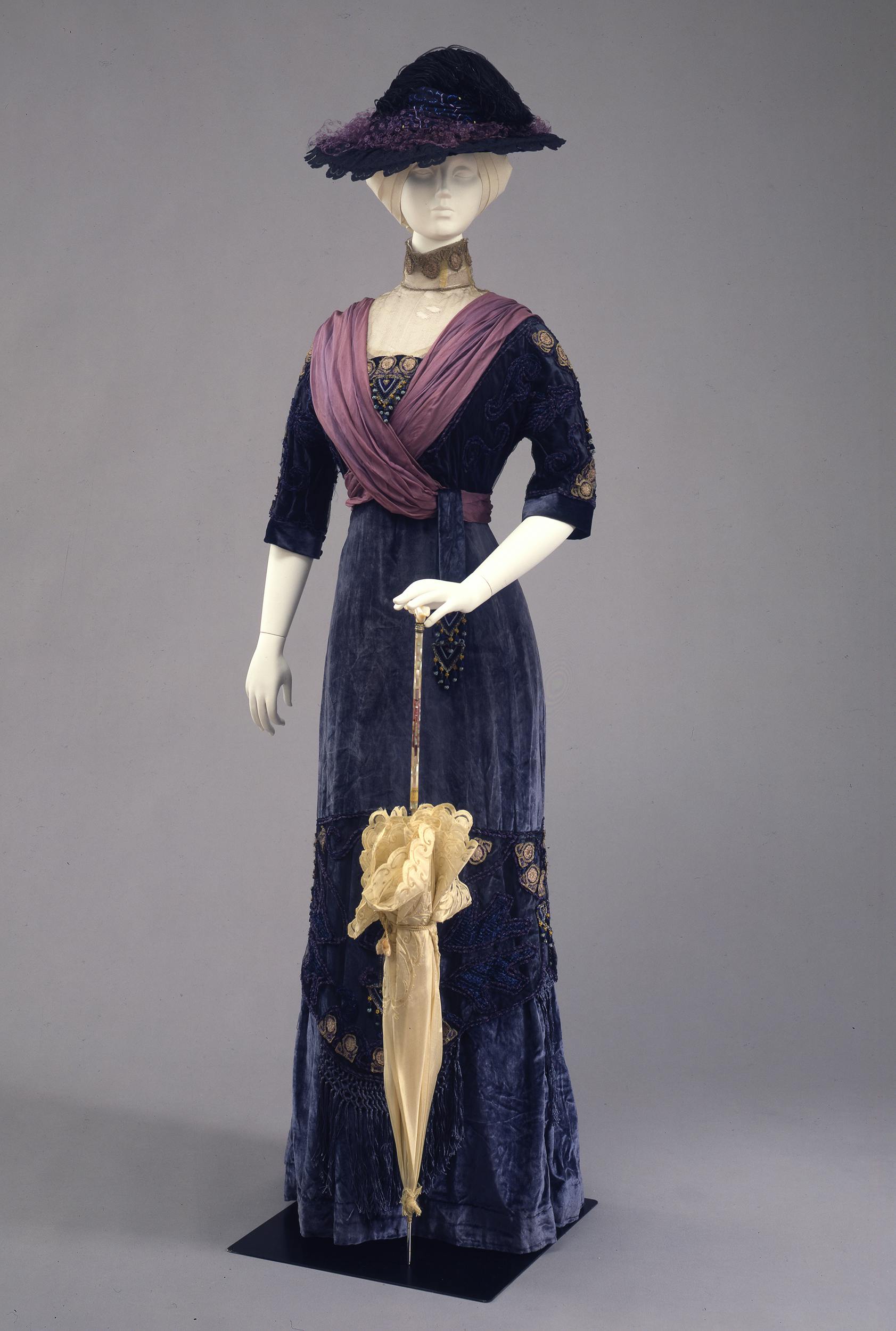Day dress
Italian manufacture
This dress has the typical straight line of the early 1910s, when women's fashion, thanks mainly to the creations of Paul Poiret, abandoned fictitious volumes in favour of dresses that fitted the body's natural shape. However, the comfort in dressing that this line would seem to suggest was only apparent, since the corset, which in those years used to stretch down to the thighs, was still underneath the robes. In addition, the skirts were often so tight at the ankles that movement was limited. As the silhouette of the clothes was made simpler, the preciousness and sumptuousness of the garments relied on materials and their contrast. Different fabrics were combined and overlaid to create the dress: shiny and opaque, light and heavy, in turn adorned with embroideries mixing techniques and yarns to create an interplay of weaves, transparencies and volumes. In this dress, blue velvet is overlaid with purple taffeta following a criss-cross pattern that resembles a shawl over the bust and around the waist. Bodice and skirt are partially doubled in blue tulle, which forms the basis of an elaborate embroidery where silk thread stitches, applied metal yarn elements, and small silk pendants are mixed together. The neckline is bridged by a guimpe, namely a silver tulle front which, according to the fashion of the first 13-14 years of the 20th century, ends with a high transparent collar that wraps around the neck up to the chin. These collars, which were required to be high and made of very light materials such as tulle, organza or lace, were kept upright by small sticks called neck holders that could be made of metal wire or, as in this case, of early synthetic materials such as celluloid. The intricate lacing in the centre of the back side, which consists of a long double row of metal hooks and snaps that was designed to close first the inner lining and then the dress itself, made it necessary to have the help of a maid in order to get dressed.
Donation by Riccardo Vivarelli Colonna, Florence
It belonged to Virginia Bartolini Baldelli, married to Mr. Vivarelli Colonna in 1907
Non original hat.
